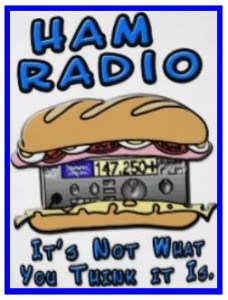We encourage you to explore our web pages to learn about our club and a fascinating and engaging hobby – Amateur Radio!
What is Amateur Radio? Amateur or “Ham” Radio has many faces. It can be any combination of a dozen different activities, depending on your interests. One can learn electronics or build antennas and radios. Some of our members like to explore multiple modes of digital and satellite communications. Others assist the community with emergency preparedness or weather spotting. If you’re the competitive type, Radiosport contests provide a test of your equipment and operating skills. Want to make new friends world-wide or improve your geography skills? Then “DXing” (making long distance contacts) can take you to the far reaches of the globe. Or perhaps you just want to chit-chat on the drive to work to pass the time, even talk to an astronaut as the International Space Station passes overhead. You can focus on a single topic or try it all. For the big picture, the American Radio Relay League web site at http://www.arrl.org/ offers information for the beginner up to the most advanced amateur.
Amateur Radio in St Petersburg You are currently looking at the St Petersburg Amateur Radio Club (SPARC) web site. We meet on the first Friday of every month at DMI Research in Pinellas Park, enter through the back door. Meeting location information is available here. Our members come from all walks of life, some are technical, but most are just intrigued with the fun and learning opportunities afforded by amateur radio. Information about the other amateur radio clubs in the area can be found by clicking here.
How Can I Get A License and Get Started? You no longer need to know Morse code to get an amateur radio license, simply pass a multiple-choice written exam. The test costs around $15 and your license is valid for 10 years. There are three classes of amateur license. The entry level Technician exam consists of 35 questions about basic electrical and radio topics; radio safety, rules, regulations and operating procedures. You can study for the test yourself or take a formal class. SPARC offers monthly exam sessions, Click here for additional information.
Where Can I Listen to Amateur Radio? There is plenty of action on VHF frequencies. An inexpensive “scanner” will pick up ham radio communications, along with Police, Fire, Aircraft and other interesting radio traffic”. The SPARC repeater system can be heard on 147.060 MHz. SPARC has a daily “net” every evening at 6:30 PM where local hams meet to exchange news and greetings and check out their radio equipment.
If you have a “Shortwave” receiver with a “CW, SSB or BFO” switch that tunes below 30 MHz, you can listen in on worldwide communications. Regional SSB transmissions can be found between 3.800 and 4.000 MHz and from 7.125 to 7.300 LSB most times of the day. To hear hams from around the world, listen to 14.150-14.350, 18.100-18.168, and 21.200-21.450 MHz using USB during the day.
Join the Fun and Learn More
You are encouraged to come to a club meeting, meet our members and see what we’re all about. You don’t need to be a ham! Please let us know if there is anything else we can do to help! You can contact the club at the email addresses by clicking here.
SPARC – Keeping Da Burg wireless since 1932.

